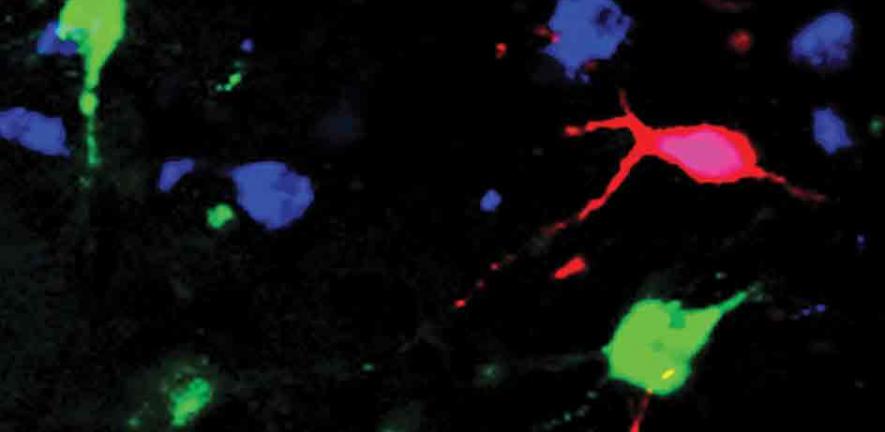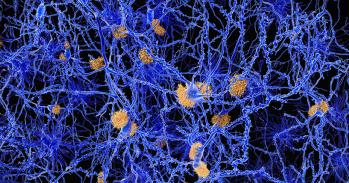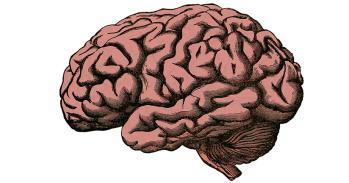
New research in Cambridge is deciphering neural control signals that create the right brain state for the right situation.
New research in Cambridge is deciphering neural control signals that create the right brain state for the right situation.
Somehow our brain state is prone to instability, and the orexin system often steps in to prevent loss of wakefulness, by orchestrating a burst of activity throughout the brain.
It would be reasonable to think of the brain as the most complex machine known, given the diversity and sophistication of the tasks it can perform. It perceives and organises multisensory information about the world, makes split-second decisions based on this information, and controls sophisticated movements to put these decisions into action. It also generates seemingly infinite combinations of thoughts and feelings to solve abstract problems and create works of art. What’s more, it can get better at all of this through learning and practice.
This vast range of powers is truly impressive, but poses a serious control problem. How does the brain ensure that all of these feelings and actions happen at the right time and don’t clash with each other? Recent studies suggest that this may not be as random and whimsical as it often seems. Well-defined neural networks appear to keep a close watch on overall brain activity and help consciousness flow smoothly from one state to the next.
The daily dance of brain states
We are all familiar with two most strikingly different states of consciousness: sleep and wakefulness. Most of us take wakefulness for granted and can assume that we won’t suddenly fall asleep in the midst of talking and laughing. Not so for people suffering from narcolepsy, a sleep disorder causing irresistible attacks of sleep and paralysis that suddenly intrude into normal wakefulness. Here, laughter is definitely NOT the best medicine – bizarrely, severe narcoleptic attacks can be triggered precisely by positive emotional states such as laughter. For many years, the cause of narcolepsy was a mystery but it is now known to be due to a lack of brain proteins called orexins that are made by a few thousand neurons located deep in the brain’s hypothalamus.
Orexin neurons appear to be critical for the smooth flow of brain states in all mammals. Loss of these cells in humans, dogs, mice and rats causes narcoleptic fragmentation of consciousness, with abnormally frequent and rapid transitions between sleep and wakefulness. How do orexin neurons promote stable wakefulness? Even though they are few in number, orexin neurons extend their axon arms throughout the brain. Release of orexins from these axons turns on brain regions involved in cognitive arousal and attention. Somehow our brain state is prone to instability, and the orexin system often steps in to prevent loss of wakefulness, by orchestrating a burst of activity throughout the brain. Orexin neurons also seem to be critical for normal orchestration of wakefulness-dependent behaviours such as reward seeking and food consumption.
Sweet dreams
The evidence linking orexin neurons to brain state control is so strong that this cell type is especially attractive to researchers like Dr Denis Burdakov at the Department of Pharmacology who want to understand the neural basis of behaviour. By studying the properties of single orexin neurons, it might be possible to get a glimpse of the molecular machinery underlying brain state control.
Dr Burdakov’s group has shown that orexin neurons act as intrinsic generators of wakefulness-promoting electrical signals, and that the frequency of these electrical impulses is fine-tuned by the environment. Strikingly, orexin neurons appear to be specialised in detecting changes in key physiological variables such as sugar levels. This research has shown that glucose opens special pores in the membranes of orexin neurons known as potassium ion channels, thereby blocking their electrical signals.
This mechanism is striking in its sensitivity – the activity of orexin neurons can accurately track even the tiny changes in sugar levels that occur in the brain between breakfast and lunch. Orexin neurons become activated when energy levels fall, stimulating wakefulness and activity to ensure an animal seeks out food when hungry. In turn, their block by glucose is perhaps the strongest candidate mechanism for after-meal sleepiness.
Glucose sensing by orexin neurons represents an unusual physiological pathway through which sugar may affect sleep and appetite, and could provide an attractive target for pharmacological intervention in body weight disorders. The importance of research in this new area was recently recognised by the Biotechnology and Biological Sciences Research Council (BBSRC), who awarded Dr Burdakov a three-year research grant to unravel molecular steps in the regulation of orexin neurons by sugar.
Awake and hungry
How do orexins stimulate appetite? Dr Burdakov’s research has shown that orexins inhibit the activity of a key population of neurons that suppress appetite – the melanocortin neurons of the arcuate area of the hypothalamus.
The activity of every neuron in the brain is set by a push–pull balance between synaptic excitation and inhibition. In the appetite-suppressing melanocortin neurons, which like many brain cells are innervated by orexin-containing nerve fibres, orexins tip this balance in favour of inhibition, thereby silencing the melanocortin cells. This mechanism may help ensure that alertness, attention and appetite are appropriately synchronised: when energy levels fall, cognitive arousal and appetite will be stimulated together, increasing the likelihood of successful food seeking. Conversely, when food is eaten, then appetite, arousal and activity may be turned off together to create optimal conditions for converting the food into fat stores. A potential downside is that the activity of orexin neurons during wakefulness may also drive hunger, which would fit in with the well-known association between insomnia and obesity.
Neurons on acid
Considering the widespread connections of orexin neurons, it is hardly surprising that more and more behavioural roles for these cells are being discovered. One of the latest is their role in breathing – orexin neurons provide an excitatory stimulus to key brainstem areas involved in ventilation. This seems especially important when breathing needs to be increased, for example to get rid of excess carbon dioxide in the body. In mice with a deficient orexin system, these vital breathing responses are reduced by as much as 50%.
How do orexin neurons ‘know’ when to stimulate breathing? Dr Burdakov’s team found that rising levels of acid, such as those that occur during sleep apnoea (a pause in breathing), release an electrical ‘brake’ in orexin neurons. This allows the neurons to fire faster. Similar to the effects of glucose, this brake consists of potassium pores in the orexin cell membrane – when open, they stop neurons from firing. Rising acidity shuts them down, making orexin neurons fire very fast; falling acidity opens the pores, silencing the firing. In the body, rises and falls in acidity are controlled by breathing. Acid is constantly made by the body’s metabolism, but is normally prevented from building up because we breathe out ‘acidic’ carbon dioxide. During sleep apnoea, the breathing stops, leading to a dangerous build up of acid in the brain. Acceleration of orexin firing by acid dissipates this threat by causing awakening and increased breathing.
Beyond appetite and arousal
In just a few recent years, orexin neurons have emerged as a powerful, multitasking control system of the brain, important for coordinating vital adaptive behaviours such as wakefulness, appetite, reward and breathing. The aim now is to unravel how orexin cells control multiple interacting circuits by acting as polymodal sensors of their environment and how these circuits ‘talk back’ to orexin neurons in different behavioural states.
For more information, please contact the author Dr Denis Burdakov(dib22@cam.ac.uk) at the Department of Pharmacology.
This work is licensed under a Creative Commons Licence. If you use this content on your site please link back to this page.





